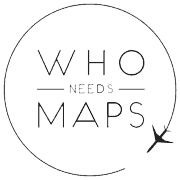[vc_row][vc_column][vc_column_text]
When travelling to Asia, getting access to local currency is essential. Whether you need the Yuan, Rupiah, Ringgit, Peso, Rupee or Kip, if you’re spending money outside your home country, it will have to be done in the local currency.
Unfortunately, getting access to local currency conveniently and cost effectively is not always easy. In fact, where to exchange money is very important. If done incorrectly you can pay up to 15% more, on top of the exchange rate, just to convert your OWN money. But we have a few tips and rules of thumb to keep you from paying more than you have to.
1. Credit Cards:
Most Visa & MasterCard credit cards, and debit cards are accepted around the world, making them very convenient payment mechanisms. However, it’s important to understand how you get charged when using your card abroad.
If you use your Visa or MasterCard abroad, you will be charged the spot market conversion rate (which may be found in the Wall Street Journal or Bloomberg at the time of the transaction), plus you will be charged what’s called a foreign transaction fee.
The foreign transaction fee goes to the bank. Typically, the bank will charge you between 2.5% to 3% in foreign transaction fees – not a massive sum, but in large quantities, worth shopping around.
However, several banks now offer travel credit cards without any foreign transaction fees. Whether you have access to a U.S. Citi travel card, Canadian Air Mile reward credit card, or the Australian Bank West Zero Card, there is an option for you.
The benefit of a credit card that does not charge a foreign transaction fee, is that when you use your card to buy a product or service in Indonesia, Vietnam, Thailand or the Philippines, you’ll be charged the spot market foreign exchange rate, without any additional fees from the bank. The spot market foreign exchange rate is the absolute best foreign exchange rate available – typically reserved for large companies that exchange millions of dollars every day.
The benefit of a credit card that does not charge a foreign transaction fee, is that when you use your card to buy a product or service in Indonesia, Vietnam, Thailand or the Philippines, you’ll be charged the spot market foreign exchange rate, without any additional fees from the bank. The spot market foreign exchange rate is the absolute best foreign exchange rate available – typically reserved for large companies that exchange millions of dollars every day.
The benefit of a credit card that does not charge a foreign transaction fee, is that when you use your card to buy a product or service in Indonesia, Vietnam, Thailand or the Philippines, you’ll be charged the spot market foreign exchange rate, without any additional fees from the bank. The spot market foreign exchange rate is the absolute best foreign exchange rate available – typically reserved for large companies that exchange millions of dollars every day.
The spot market foreign exchange rate is the absolute best foreign exchange rate available – typically reserved for large companies that exchange millions of dollars every day.
The benefit of a credit card that does not charge a foreign transaction fee, is that when you use your card to buy a product or service in Indonesia, Vietnam, Thailand or the Philippines, you’ll be charged the spot market foreign exchange rate, without any additional fees from the bank. The spot market foreign exchange rate is the absolute best foreign exchange rate available – typically reserved for large companies that exchange millions of dollars every day.
Clearly a no foreign transaction fee credit card is the cheapest of all possible methods to travel.
2. Foreign Money Exchange Office:
It’s not always possible to pay with your credit card. For tips, taxis, and cafes, cash is still king. In South East Asia especially, many smaller and rural merchants just don’t accept credit cards. When that’s the case, the next best alternative is to get local currency from a Foreign Money Exchange Office. Unlike a currency exchange booth in an airport, hotel or touristy area, a Foreign Money Exchange Office, is used to trading currencies in larger sums. Need to exchange $4,000, get a few quotes from offices in your home country. See which one offers the best rate.
Unlike a currency exchange booth in an airport, hotel or touristy area, a Foreign Money Exchange Office, is used to trading currencies in larger sums. Need to exchange $4,000, get a few quotes from offices in your home country. See which one offers the best rate.
While a little inconvenient, because you either have to bring cash to the Exchange Office, send a money order or come with a certified check, often the rates are worth the trouble – especially in larger amounts. Sometimes, they can charge between 1.5% to 2.5% above the spot market rate. That said, while your local bank may only have some of
That said, while your local bank may only have some of the more popular currencies on hand, like the Yuan and Yen, a good Foreign Money Exchange Office will have even the most obscure currencies available.
What’s also nice about these services, is that some offer a free buy back service. So if you come home with a significant amount of unused foreign currency, you won’t have to pay another fee, to get it back in your home currency. Worth inquiring about.
3. Your Local Bank:
We also like to get quotes from our local bank. Don’t exchange your money with the teller. If you do, you’ll likely get a quote with a pretty high foreign transaction fee. Now banks are tricky, they won’t break out the spot rate from the exchange fee their charging. They’ll roll-it all into one rate. They usually ending charging between 2.5% to 4%, so be weary.
We recommend you go see your branch manager, and bring quotes you received from the Foreign Money Exchanges. Ask if they can beat or match any of those quotes – you’ll be surprised what a motivated branch manager can do!
ATM’s: Most South East Asian countries have plenty of ATM’s. The good news is, just about all of them will accept most foreign debit and credit cards on the Maestro, Cirus, Plus, Visa, or MasterCard networks. You’ll typically get charged whatever the local ATM provided charges, plus what your bank charges, and then the foreign transaction fee of the network. While relatively convenient, it’s not optimal. That said, for some, it’s safer to take out smaller sums of cash as you go, than to carry large sums from your home country.
4. Big No No’s:
The worst places to convert your domestic currency? Airport, hotel and foreign currency exchange booths in tourist areas. While many claim you will incur NO commissions or fees and encourage you to not buy any currency until you arrive in your destination country, proclaiming the rates offered in are ALWAYS BETTER than you could get back home, we don’t buy it.
Despite the claims, these companies have to earn money somehow don’t they? They charge in less transparent ways, and get their pound of flesh. First of all, they’ll bake their fee in the exchange rate – so you have no transparency into the spot rate (what’s published in the Wall Street Journal for example) and the bureau’s surcharge.
In addition, they’ll charge you a series of “service” and “transaction” fees, which are not published very well, until after you’ve placed your order. By that time you could be in for a $10 to $15 fee – plus the hidden surcharge fee.[/vc_column_text][/vc_column][/vc_row][vc_row][vc_column][vc_column_text]
[/vc_column_text][/vc_column][/vc_row]




I usually have around $20.00 in local currency when I arrive at any destination. Just enough to get me by for a little bit. I use an ATM card that doesn’t charge fees withdrawals either in the US or internationally. I then just use my ATM at a local bank or kiosk whenever I need cash.
Smart! In Asia we got away using American $$s but I was stuck in AU for 3 days since my card didnt work and all banks were closed! That was terribly unfun :(
I like to have my bases covered with redundancy.
I carry the following
100-200 USD’s in local currency exchanged at my local bank before going
100 USD as emergency backup – this emergency backup should only be in USD or Euro’s. It’s pretty hard to change non major currencies unless it is a border country (for example Thai Baht in Korea).
US based ATM card (and my Taiwan ATM card)
my US based credit card
I split up the backups within my luggage so if something is stolen I still have access to cash.
Great advice!! I like to also carry extra money in my sock in case my purse gets stolen :)
All smart advice. I have an exchange spot in Bangkok that is AWESOME for exchanging money… It’s called ‘Super Rich.’ I don’t go anywhere else now, because you just can’t beat their rates! When I’m about to travel anywhere else, I just head there and get all the currency I need for my travels. :) Although it is a bit inconvenient as you mentioned, I’d highly recommend it- I’ve saved a lot of money this way!
Thanks for the great tips!
To change cash, there is a new mobile application Fairswap.
Broadly, we can exchange & convert cash currency in real-time by meeting with each other at a pre-agreed location.
Could be a good way to find some foreign currency before traveling or get rid of some leftover after holidays.